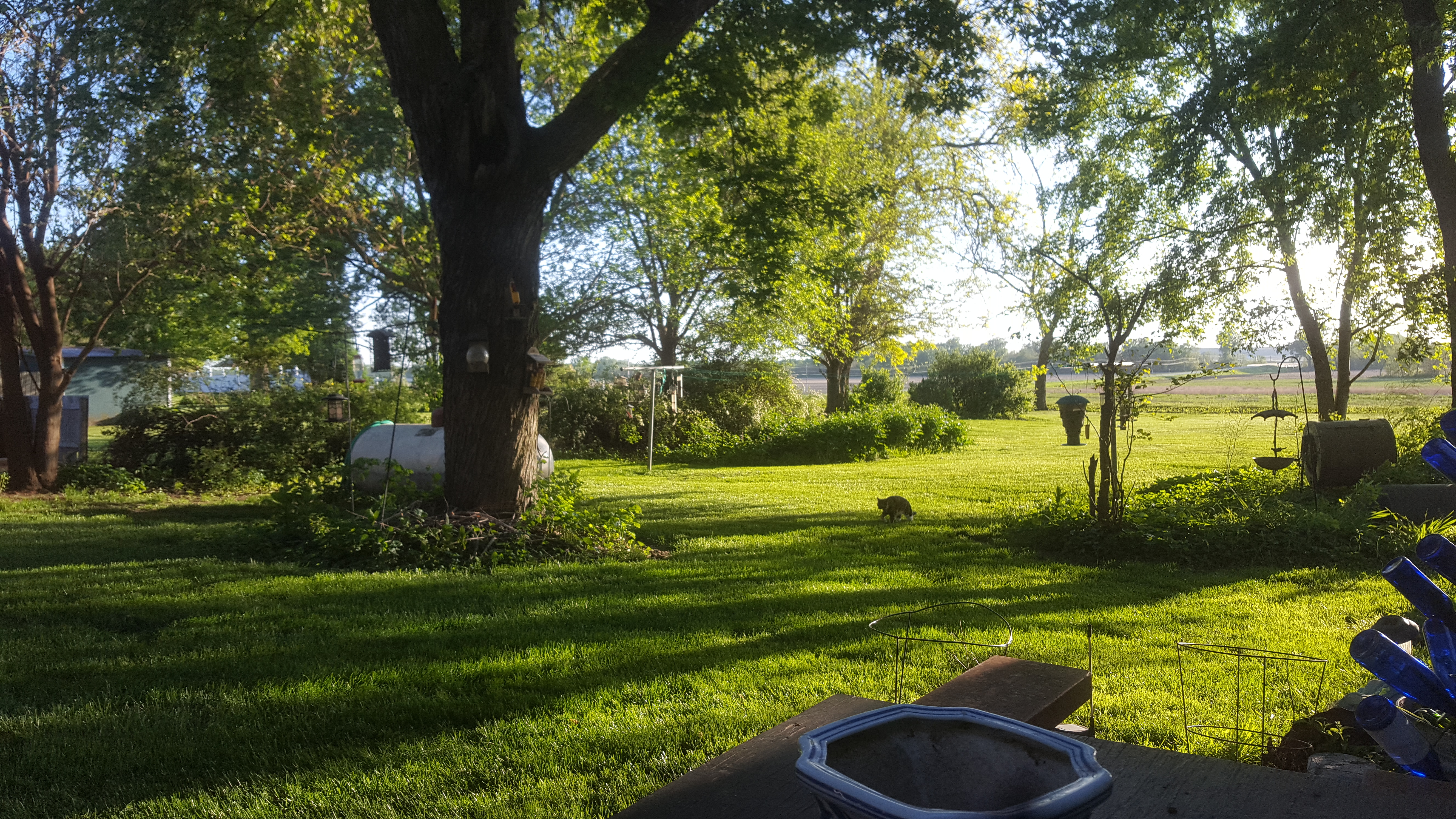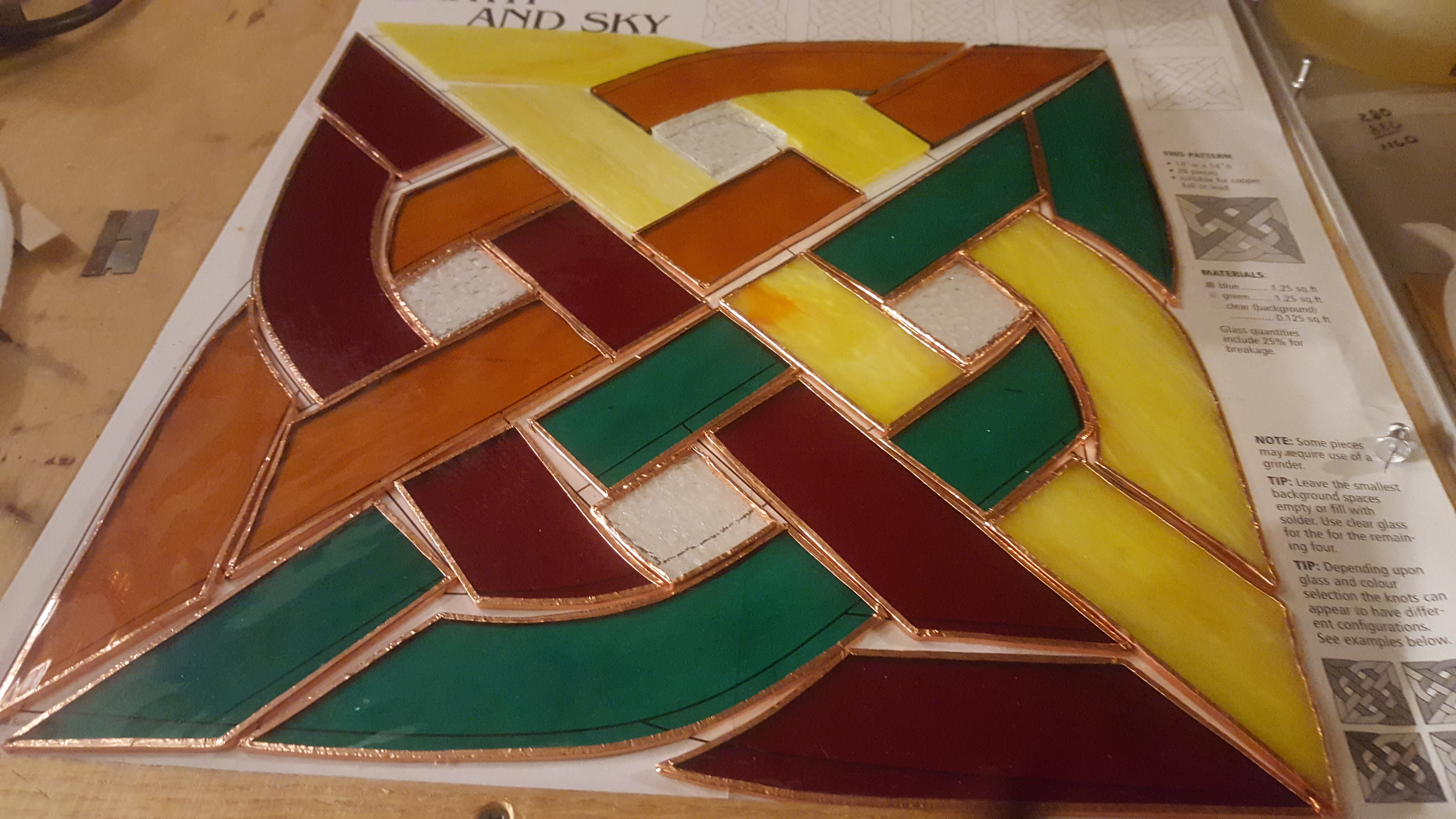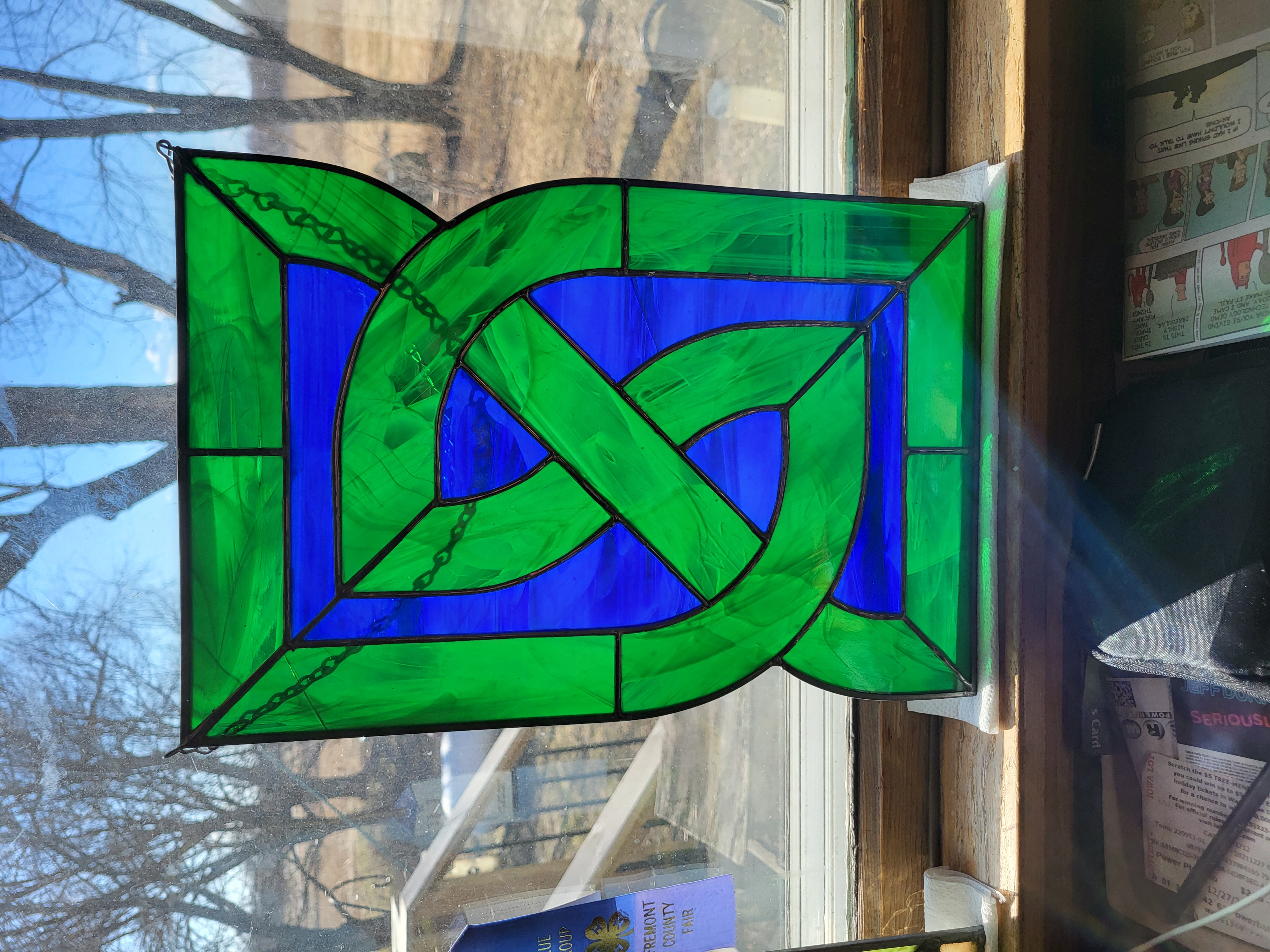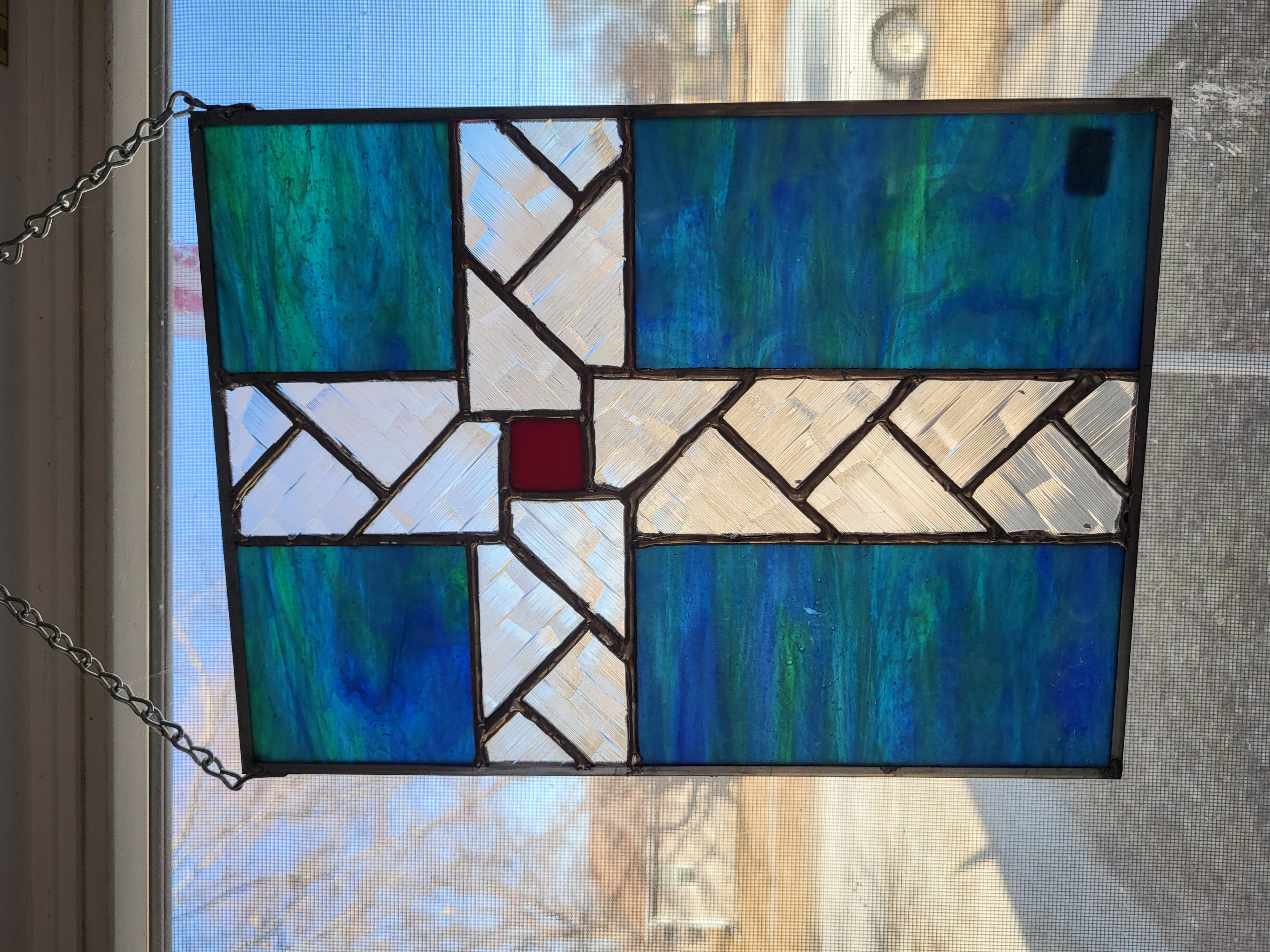


 |
 |
 |
 |
I have been working in Stained Glass for quite a few years. I find it to be a challenging and fulfilling hobby. I never cease to be amazed by the creations that I come up with. The reason I say that is that you never really know what your piece will look like until it is hanging in the window with the sun shining through it. I have done pieces that I did not like while I was making them, but when I hung them up, I loved them. They are also a matter of taste. I have done a few that I have not liked that were loved by other people, so they made great gifts. |
I learned to do stained glass many years ago. It was strange how I got into it. I had been doing handyman work and got a job where I had to cut a bunch of glass window panes. My dad offered me his glass cutter that he bought when he did some stained glass work and it worked great. A few years later, I drove by an art glass store and decided to stop in and buy a good cutter of my own. Once in the store, I was amazed at all the neat stuff and I let the girl behind the counter talk me into taking some of their classes. The rest is history. I did it for several years but got away from it when I met my future wife and got busy with other things. But that wasn't the end of it. |
 |
 |
Several years ago, our town and our church were hit by a hail storm, resulting in damage to one of the stained glass windows in the church. Because I was experienced with it, the church board asked me to look into getting someone to restore the window. However, when I looked into getting it done professionally, the cost for the 16 x 32 window was $1400! Of course our little small town church didn't have that kind of money, so the board elected me to restore the window myself, no matter how long it took. I knew how to do the "foil" style of stained glass, but I had never done the "came" style, so I would have to learn a new skill since the window was made in the Came style. In foil style, you cut the glass pieces to size, then wrap the edges of each piece with foil tape. Then you fit the pieces together on the build board and solder the entire length of every joint between the pieces. This is a quick and simple way to do it, but it is often not that pretty as the joints can be somewhat irregular. |
The came style is much more painstaking, but has, I believe, much nicer results. Plus, with came, you have to glaze it like a regular window so you can expose the window to the elements. You can't do that with the foil style. In came style, you use a prefabricated lead channel that fits between the glass pieces. Once you have all the pieces fit together, you solder the came together only at the end points of the came. When you are done, the glass pieces are loose in the channels of the came. You then have to glaze the window, which means to pack glazing compound into the channel of the came. This makes the window weathertight and makes the pieces tight in the window. The aesthetic value of this style is that the joints between the glass pieces are always exactly the same width. The disadvantage is that you have to be much more accurate in cutting and fitting your glass. |
 |
 |
I like to do crosses. This one is a favorite of mine and it has a story behind it The glass used around the cross in this piece came from a church in Germany that was being torn down. There was a US serviceman stationed in Germany who was walking home one day and saw some men tearing down an old Catholic Church. They were throwing rocks through the stained glass windows tyo break them up. The man asked them if he could take some of the glass and they said he could. So he gathered up about twenty pieces of the glass, wrapped them up and shipped them back home to Nebraska. Many years later, I bought them from his son. Though the serviceman passed away many years ago, I think he would be happy to see how the glass has been recycled. |
This is the first stained glass panel I ever did. I made it in the classes I took at Rainbow Artistic Glass in Omaha. It is a Celtic Knot design that came in a set of plans that I bought for the classes. There is another Celtic Knot design above here on this page that came from the same set. I am very happy to give Rainbow Glass a plug here. Whenever I travel, I always seek out the stained glass stores in search of bargains and ideas. But I have to admit that for selection, supplies, prices, service and overall friendliness and helpfulness, I have never found any store that compares with Rainbow Artistic Glass, either in the Omaha area or anywhere I have travelled. Their prices are great and their service is even better! |
 |
 |
This here is a type of design that I think is fun and easy to create. It is a quilt block design. This is one from the old Kansas City Star quilt blocks that were printed way back in the 1920s and 30s. Designs like this are easy to copy or create and there are literally an infinite number of different patterns that you can use. They are simple to cut and assemble and they always look great. |
This cross here is one that I helped a young girl from town do for a 4H project to be entered at the county fair. We collaborated on the design of the cross, then we each made our own version of the piece. I have done several versions of this design for gifts and for selling. It is a simple but catchy design. I like to use clear glass as a highlight in my pieces, whether they are bevels or different textures. I think clear glass adds a nice accent to the piece. |
 |